Top 6 Strategies for Team Alignment with Business Mission
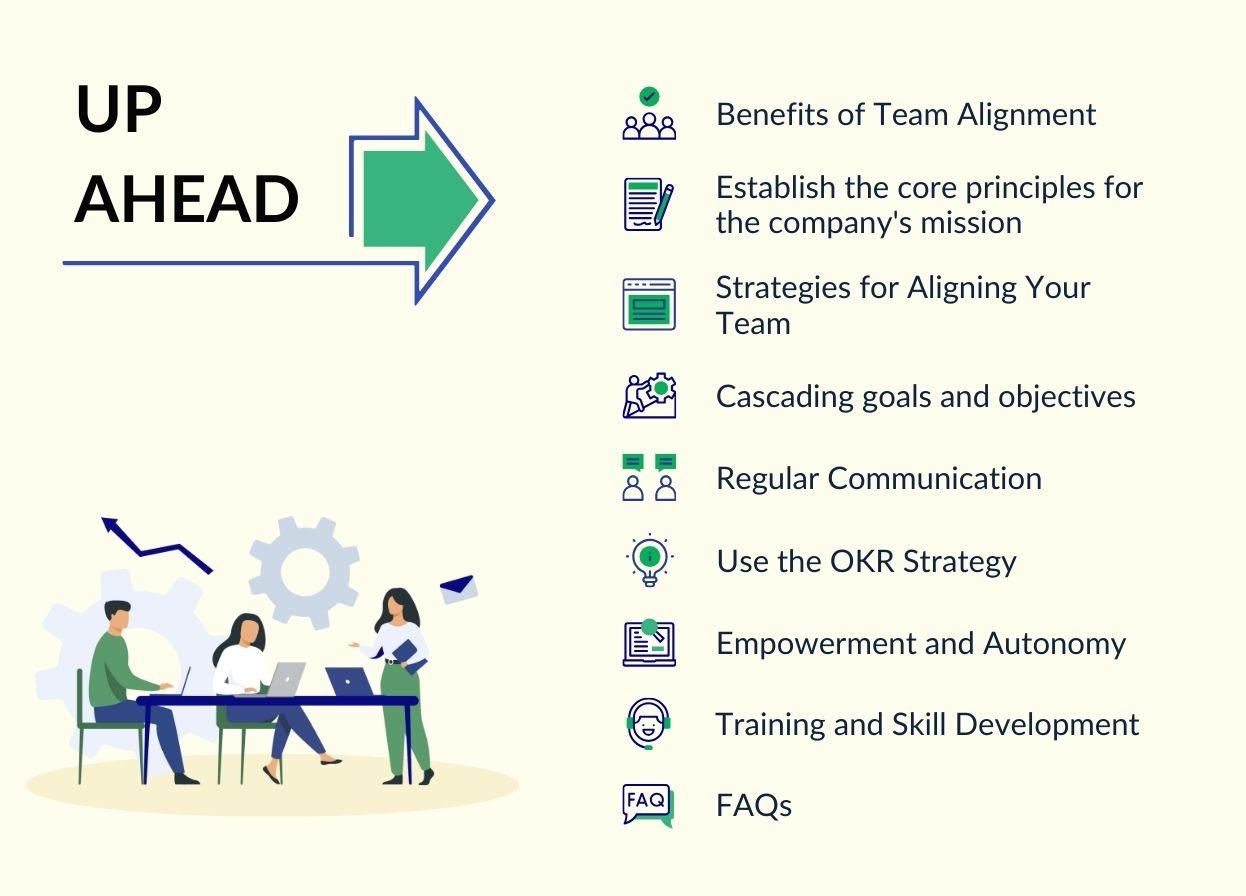

A McKinsey survey states that employee engagement increases when a company’s purpose is aligned with its employees’ goals and they know how their actions contribute to the company’s purpose.
So, how do you align your employees with your business mission? Or let us rephrase - how do you align organizational goals with your team members' individual goals?
This blog explains various strategies for:
- How leaders can strategies for team alignment or onboard team with the business mission
- How employee engagement and commitment work.
Benefits of Team Alignment
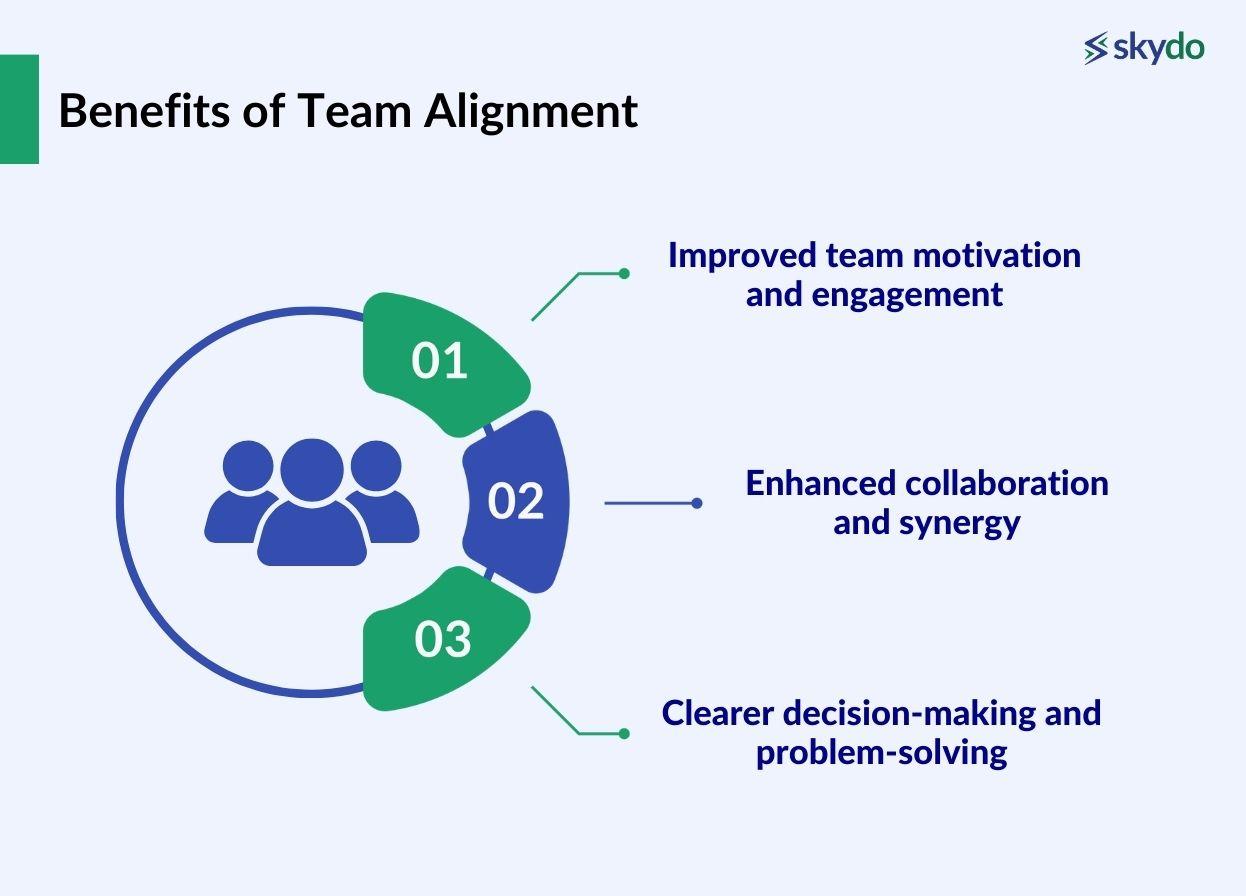
1. Improved team motivation and engagement
Teams develop a greater sense of purpose and are more driven to perform their best when aligning with the organization’s mission and goals. A study shows that higher employee engagement increases business productivity by 18%.
2. Enhanced collaboration and synergy
When everyone understands the common objectives, they can collaborate more seamlessly, leading to improved synergy and innovation within the organization.
3. Clearer decision-making and problem-solving
With a shared understanding of the company's goals and mission, decision-makers can prioritize initiatives and tackle challenges to advance the overarching mission, leading to more transparent decision-making and problem-solving processes. It also increases business profitability by 23%
Establish the core principles for the company's mission
"People don't buy what you do; they buy why you do it," says Simon Sinek in Start with Why. The team requires a purpose and motivation to align with a vision. They have to believe in the business mission to follow it.
Thus, it is necessary to establish core principles for a company's mission that inspire your team and serve as the driving force for its existence. It provides crucial answers to questions like why the organization exists, its mission, and how it intends to achieve its core business principles.
Decathlon is a leading sports goods retailer. The CEO, Barbara Martin Coppola, explains the business mission is "to democratize sport so everyone can experience its wonders on their own terms." How does their team align with it? One reason is that they attract employees who are passionate about sports. However, the main reason is the entrepreneurship and empowerment culture within the company.
Its minimal hierarchical structure inspires people at all levels to perform better. This alignment fosters a cohesive and values-centric work environment and empowers the team to collectively drive their efforts toward shared objectives.
Some examples of business core principles to achieve a company's mission are:
- Customer-centric approach: prioritizing customers' needs and demands and incorporating the feedback in your product.
- Sustainability: ensuring sustainable and socially responsible business decisions.
- Data-driven decision-making: leveraging technology and data to make informed business choices that offer a competitive advantage.
Here is how you can set business core principles for your organization:
- Identify the core business values such as integrity, transparency, or innovation.
- Seek inputs from various stakeholders about their perspectives on different business values.
- Finalize 3-5 business core principles and explain what they mean and how they define your business.
- Ensure that the principles align with your business' vision and mission.
Strategies for Aligning Your Team
It takes meticulous preparation to match your team's mission with your business mission. Here are a few channels for communication, pragmatic ideas, and efficient tactics for guiding your staff toward your business core principles.
Cascading goals and objectives
A study suggests that frontline workers are less likely to understand how they contribute to the business mission than the leaders. Team alignment requires cascading the mission from strategy to operations. It is also called the trickle-down effect.
Break down high-level organizational objectives into specific ones at lower levels (to ensure everyone understands how their efforts contribute). Here is an example of cascading goal setting. You can use a similar template to add goals for your organization.
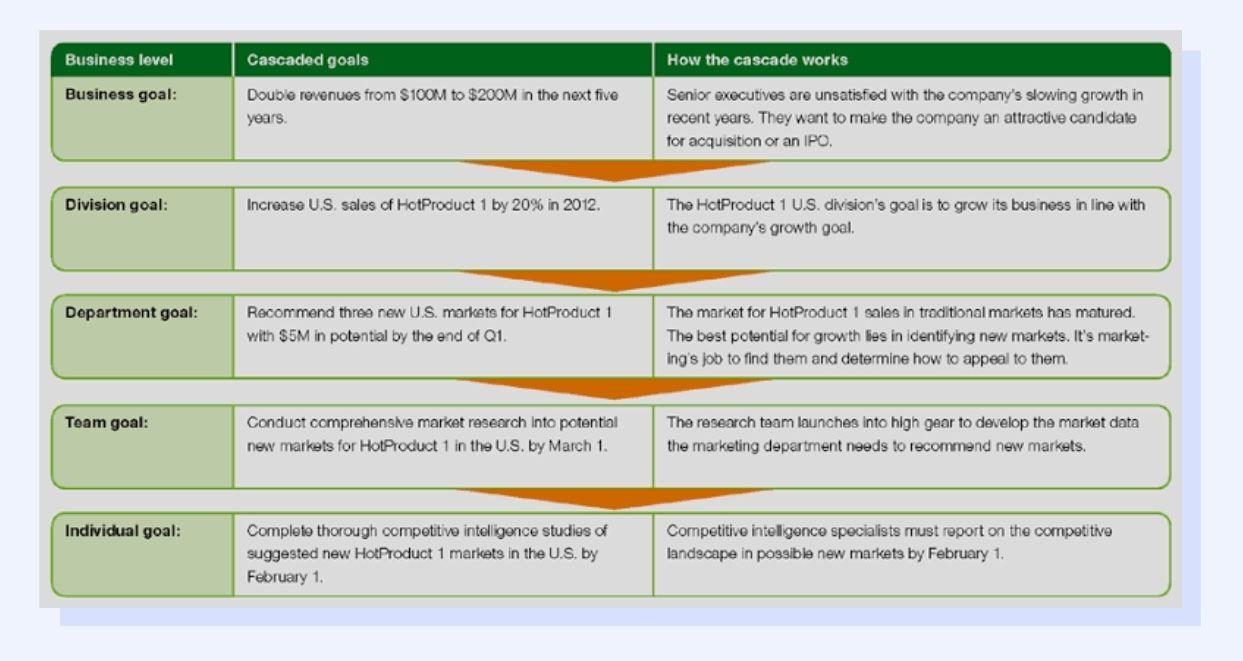 Source: Oracle
Source: OracleRegular Communication
You have now set clear goals for the team and conveyed them well. However, your team may not be able to achieve those goals properly. Why? Lack of productivity due to ineffective communication.
Grammarly's The State of Business Communication Report reveals that poor team communication increases costs and reduces productivity. In fact, teams lose 7.47 hours per week on average due to ineffective communication.
The key is establishing a robust communication channel that instills team trust, improves collaboration, and increases productivity. Here is how you can improve internal business communication:
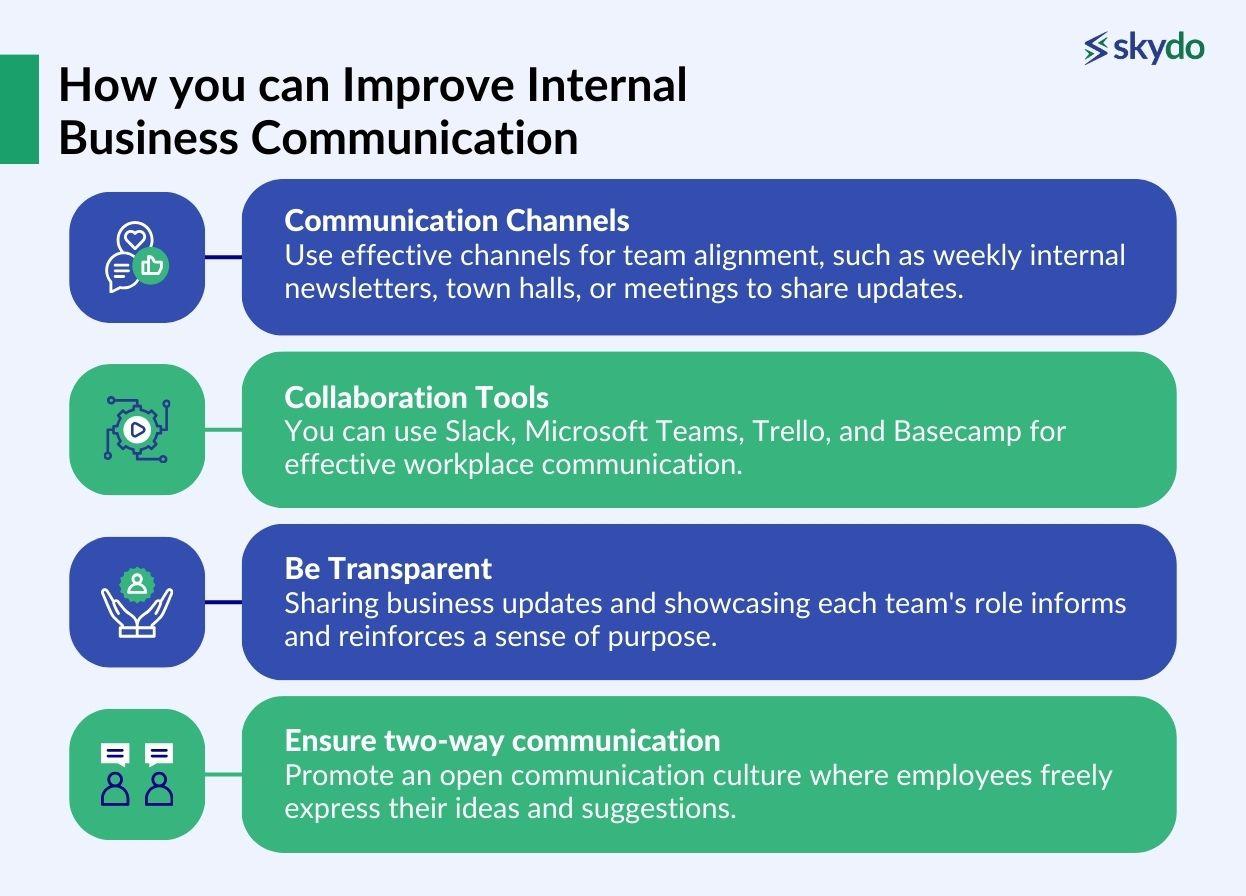
- Communication Channels: Use effective channels for team alignment, such as weekly internal newsletters, town halls, or meetings to share updates.
- Collaboration Tools: You can use Slack, Microsoft Teams, Trello, and Basecamp for effective workplace communication.
- Be Transparent: Sharing business updates and showcasing each team's role informs and reinforces a sense of purpose. Based on the study conducted by Think Talent and CMSWire, 97% of employees believe communication impacts their task efficiency.
- Ensure Two-Way Communication: Promote an open communication culture where employees freely express their ideas and suggestions.
Learn more: Effective Time Management Techniques for Business Owners
Use the OKR Strategy
One of the best ways to align your team with the organizational objectives is to set strategic goals for each employee that contribute to the business mission by using the objectives and key results (OKRs) model.
- Statistics show that 72% of the team members using OKR understand the company's vision better, and 60% of team members comprehend their company's strategic direction.
- In the OKR model, organizations set a key objective or goal, for example, improving brand awareness. The key results are the metrics that measure goal achievement.
- You can use OKR tools like Clickup, Weekdone, Asana and Miro.
Here is an example of how to use the OKR framework for your team.
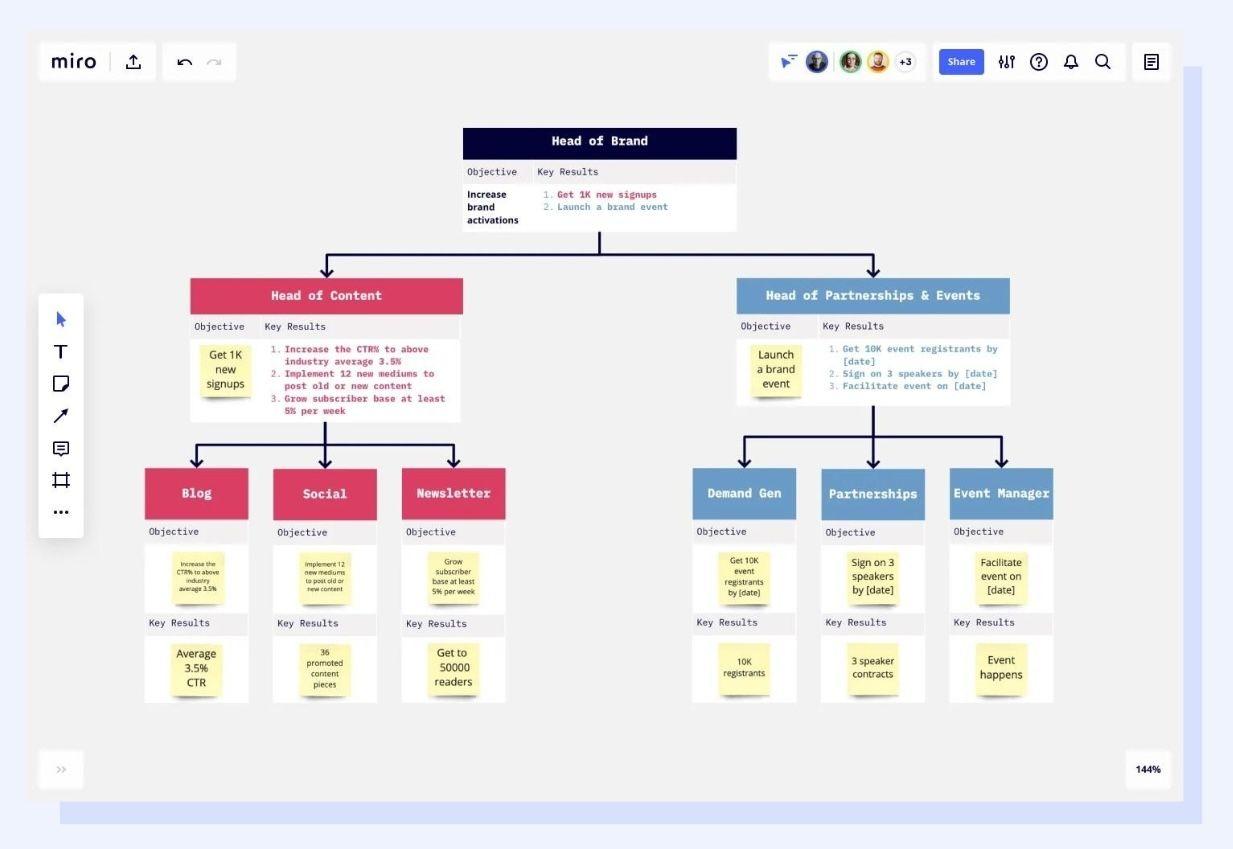 Source: Miro
Source: MiroEmpowerment and Autonomy
An increasing number of employees seek purpose, autonomy, and work flexibility beyond monetary benefits.
- Entrusting team members with ownership of tasks cultivates responsibility, unlocks their unique skills and creativity, and boosts productivity.
- Empowered and autonomous team members are more motivated and engaged, enhancing their ability to drive the company toward its objectives.
- Avoiding micromanagement fosters productivity and bolsters team members' confidence in their work, emphasizing the importance of autonomy.
Here is how leaders can help their team members feel empowered at work.
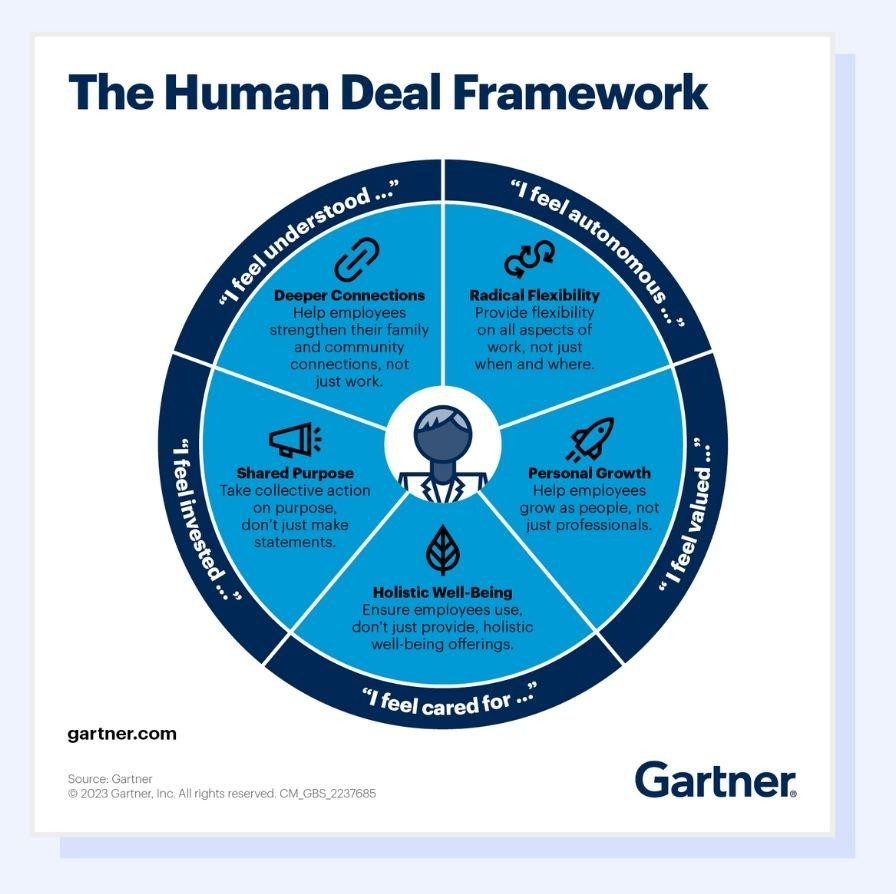 Source: Gartner
Source: GartnerPerformance Recognition
82% employees feel happier and more motivated when recognized. Performance recognition also improves employee retention. Therefore, prompt acknowledgment can increase team alignment. The following are some of the most effective methods of setting up an employee recognition programme:
- Create a monthly employee wall of fame to acknowledge top performers
- Offer new learning and development opportunities like leading a project
- Give rewards in the form of cash or stock options
Learn more: 8 Recruitment Strategies for Top Talent for Startups
Final Words
Team alignment is the synchronized pursuit of a common goal among all employees, teams, and leadership within an organization to achieve success.
Alignment with the company's mission translates into heightened productivity and output as teams operate with greater efficiency and cohesion. This, in turn, contributes to improved employee morale, as team members derive a sense of purpose and pride from understanding how their contributions impact the company's success.
If you require a starting point or guidance on how to initiate this process effectively, consider consulting the following books:
- The Five Dysfunctions of a Team by Patrick Lencioni
- Leadership Team Alignment: From Conflict to Collaboration by Frédéric Godart
- Team of Teams: New Rules of Engagement for a Complex World by General Stanley McChrystal
Frequently Asked Questions
Q1. How do you measure team alignment?
Ans: Team alignment can be measured through regular communication, goal tracking, and feedback mechanisms. Assessing shared objectives, values, and collaborative efforts ensures cohesion.
Q2. How do you set team vision and mission?
Ans: Establishing a team vision and mission involves collaborative goal-setting, defining core values, and aligning objectives with organizational goals. Regularly communicate and reinforce the vision to ensure team cohesion and commitment.
Q3. How do you unify a leadership team?
Ans: Unifying a leadership team requires open communication, fostering trust, and aligning on common goals. Encourage transparency, active listening, and collective decision-making to strengthen team unity.












